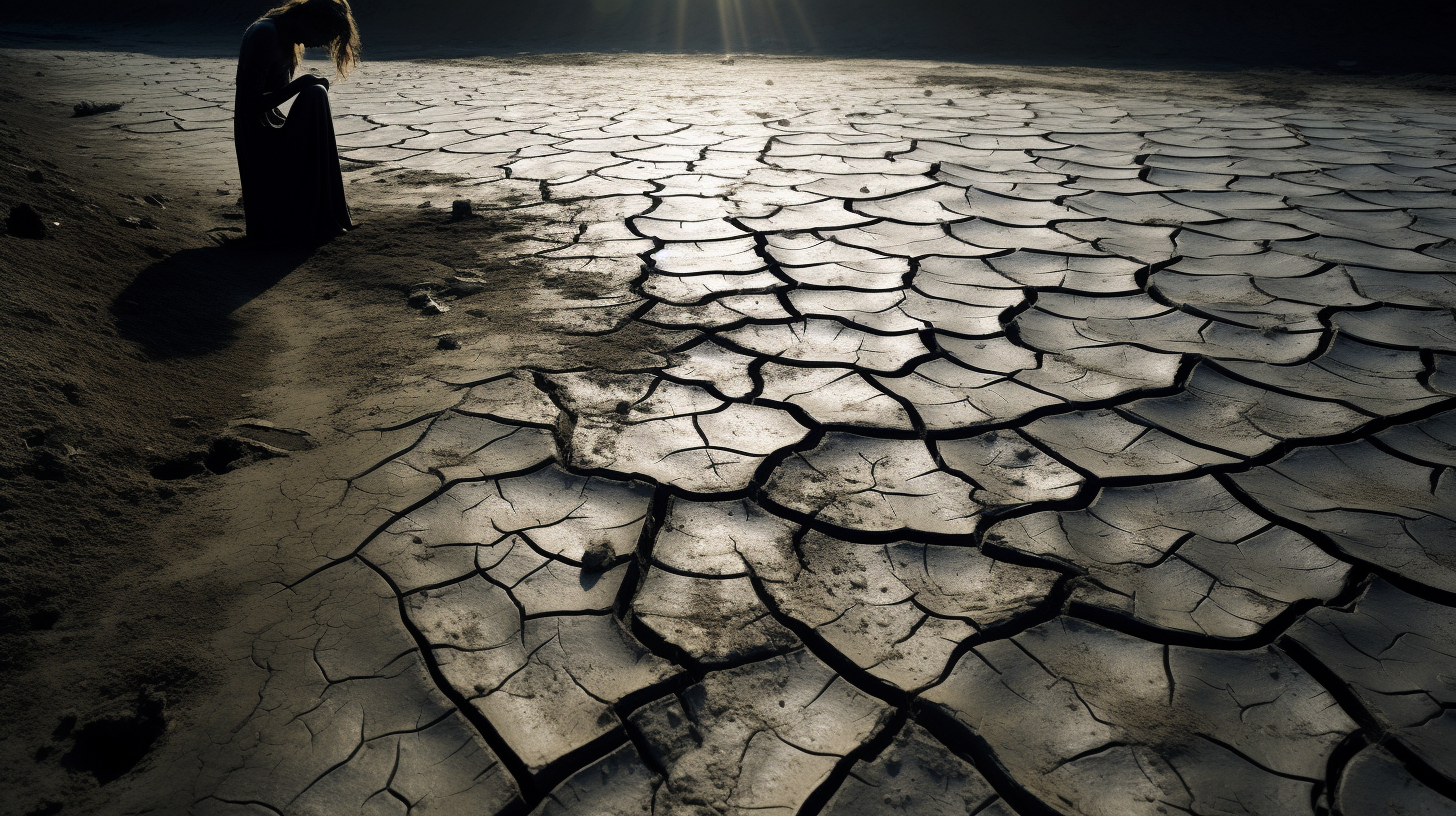In the barren stretches where even cacti bow in submission to the sun’s relentless assault, the land is a cruel mirage of heatwaves and dusty despair. Here, beneath the azure dome that once promised nourishing showers, the Rain Shadow Effect, an insidious phenomenon, holds the terrain in a merciless, arid embrace. Villages become spectral monuments to abundance, the parched throats of the earth gasping for a deluge that never arrives. ‘Rain Shadows – Water Woes Where Wells Run Dry’ surveys the skeletons of civilizations caught in the death grip of an environmental chokehold.
The term ‘rain shadow’ might evoke an almost poetic image; sadly, the reality is stark. When moist air ascends over a mountain range, it cools and condenses into precipitation on the windward side. The leeward side, however, becomes a tomb of dryness, as it falls within the mountain’s ‘shadow’, where the air, stripped of moisture, descends and warms, discouraging rainfall.
Consider the plight of communities nestled in the lee of towering monoliths; their fates seem preordained by geography. Yet, recent decades have seen a tumultuous shift. Climates stagger under the weight of humanity’s excesses; ancestral springs retreat into the fractured ground as if in rebellion against our avarice. Once fertile lands mutter curses of sterility, for the wells—aquatic lifeblood—have dwindled into myth.
Experts whisper of a ‘hydro-illogical cycle’, where the mere expectancy of water becomes a form of madness. Fields lay barren, and farmers, whose furrowed brows once mirrored the ploughed earth, now portend the cracks that mar their legacy. Their tales of verdant yesteryears seem as fantastical as folklore—one might wonder if the rivers did indeed flow, or was it merely an illusion?
The cry for help is often mute, for desperation speaks in hushed tones when hope has been leached away with the groundwater. ‘When the well is dry, we know the worth of water,’ warned Benjamin Franklin centuries ago. That worth is now calculated on the parched tongues of those who haunt the rain shadows, their eyes scanning barren skies for a cloud, any cloud, to break the monotony of blue.
Sociologists and environmental anthropologists report a disturbing trend: an exodus en masse like a congregation of phantoms wandering in search of an oasis that is but a collective apparition. Children who have never known the embrace of rain view the few droplets that survive the mountain’s barrier as diamonds falling from a stingy heaven.
Yet, amidst this desolation, innovation flickers—flint against steel—a spark of resilience. Here, solar stills offer alchemy, transmuting sunlight into precious droplets: a thimbleful of sustenance against the drought. Then there are the rainwater harvesters, the architectural wizards who sculpt catchments, coaxing humidity into yield. Their efforts are commendable, fighting against the very air that denies them life, but it’s a daunting task when combating the consequence of a planet betrayed.
The uncanny resemblance to the dystopian warnings of a young climate activist is impossible to ignore. As if plucked from the direst of prophecies, these rain shadow regions serve as a chronicle of caution for the world just outside their misery. They unfold a narrative not of what may come, but of what is; a blue print dotted with dry wells, water wars, and the skeletal remains of rivers that once carried civilizations on their backs.
Our exploration of these desolate regions does not just chronicle a crisis, it voices a silent scream. Each word etched upon these pages is a drop of ink in our collective ledger, where we account for the cost of environmental neglect—a price too steep as we witness the wells run dry and hear the echoes of water bucket chains clanking, long stilled.
